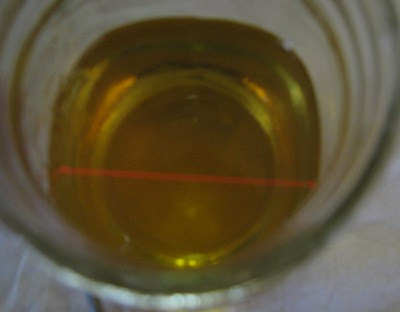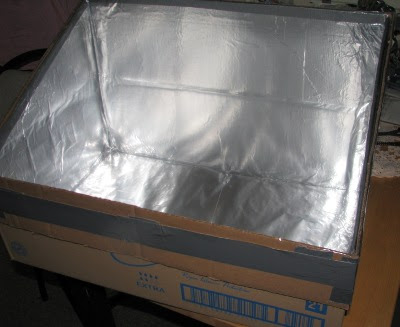I'll say right off the bat that I don't believe in free energy. All energy comes from somewhere. But sometimes people just don't see where it comes from. The first law of thermodynamics basically says that energy can neither be created or destroyed but only altered in form. The second law says that in a closed system, entropy will increase. In other words, the heat or energy in a closed system will equalize over time. An example would be a large container full of steam that turns a turbine and then condenses and flows back into the container. If you aren't adding any heat at this point, then the turbine will slow to a stop and the steam will become water and the temperature of the water in the container will equalize. That rate of equalization is called entropy. The funny thing is that it will equalize to the ambient air temperature, because, guess what, it isn't a closed system. The air touches the container and thus adds or removes some heat energy depending on temperature differential.
What about solar PV panels? If you didn't consider the sun, then they appear magical by creating energy from nothing. Or windmills that spin randomly and create power for no reason. Or sailboats that move whenever the sails "poof" up. It is a strange and mystical world we live in.
What about residential heat pumps? They often rate them at 400 - 500% but we know that's impossible. It is because they consider it a closed system and only account for electrical power in versus heat power out or heat extracted. Never mind that a huge portion of the energy into the heat pump comes from either the air or the ground.
What about atoms? Little machines made of super small particles that spin for the last 15 billion years without missing a beat. If an electron is knocked off, it magically searches for a new home. The electron is always attracted to the proton but never seems to hit it. Where does that energy come from? If it is in the atom itself, then surely, after 15 billion years each atom in the universe would have much less energy now than when they started. Doesn't it make more sense that there is an outside force giving all atoms in the universe their energy?
I think the energy comes from space itself. They used to call it aether or the ether. It wasn't just the vacuum of space, it was tangible space, a real liquid like substance. Scientists mostly believe in the big bang anyway. Wouldn't that set the whole universe in motion? I believe I read somewhere that Tesla believed that the relative motion of space and matter actually imparted energy to the matter. In other words it energized the subatomic particles.
I have read that using cosmic microwave background radiation measurements, they have determined that we are moving at 390 km/sec or 872,000 mph. Now that is fast! We could be going faster though, especially if the entire universe is rotating in space. We couldn't know that because there would be no point of reference. It would also depend on where we are in relationship to the center of the universe. If we were at the center of the universe (like some believe, lol) then we would have relatively zero motion. But that also means no power for our atoms.
Let's assume that the matter, that we are used to on planet earth and things we see in telescopes, doesn't really interact with rapid moving space except to use some of the energy to charge its particles and to provide for nuclear forces at the atomic core. But what if some matter "interfered" with normal space flow? We are more space than matter so normally space can flow very easily through us. But, in the beginning, what if some strange formation of elements or molecules occured that made it difficult for space to pass through? Well, I would say that the instant that happened, then the 800,000 mph space would have grabbed those atoms or molecules and ripped them off the planet with extreme prejudice. Sort of like jumping out of the space shuttle on re-entry and opening your parachute. I'm sure these particles were destroyed or at least reoganized to a high degree. Worst case, they would be left floating motionless in space, but to us it would appear that they are traveling at 800,000 mph.
Also, something to think about is space travel. If we were to travel either towards the center of the universe or away then our relative motion through space changes. Or, if the universe isn't rotating, then we could use the center of our galaxy as a reference. Anyway, as we change our relative speed through space, then our bodies chemical reactions could alter. Of course we are talking million of light years (light year is about 6 trillion miles).
Now, let's go back to matter that interferes with space flow. What if it only slightly interferes more than normal matter in such a way that the excess energy is radiated out in gamma radiation? Think uranium or plutonium. What if a certain formation of atoms were affected in a slightly different way? Imagine a substance that generated its own magnetic field with a north and south pole. We call them magnets. I know that some people say magnets are just springs and getting free energy from a spring is just as impossible as designing a type of machine that runs on magnets. But, first, you can block or redirect magnetic fields. A spring, on the other hand, is just a spring and it connects point A and B and either pushes or pulls. If someone makes a magnet powered engine (this may have been done already) then it isn't perpetual motion. It would just be utilizing some of the energy from space itself. I should say the relative motion of space itself. So, you can't say that the motor is more than 100% efficient or that it makes more power than it takes in. You just have to consider all power coming in. I'm tired of science ignoring space. There is talk of the curvature of space like it is tangible, then they don't even consider the ramifications of a "real space" on matter and energy. They pretend that space is just the absence of matter. Maybe matter is anti-space and space is the real stuff. All matter in the universe could be dead except for the energy that moving space gives to it.
You guys remember that video of the bridge that resonated with certain wind speed and shook itself apart? What if you layered varying substances until it interfered with space flow ever so slightly? Then you could put a magnet and a coil on one side and if it is facing the right way then space will resonate through the material and cause the magnetic field from the magnet to collapse multiple times a second. This will generate power in the field coil. Just theoretical but looking at the universe differently can open all kinds of doors.
There was a patent given around 1980, for a magnet powered motor.

You can read the article here
http://www.newebmasters.com/freeenergy/sm-text.htmlAnyway, some stuff to think about. See you guys tomorrow.
Richard


 Well, I did some experiments with just the AC constant current and decided I didn't like it. It didn't seem very efficient even after running all night. I decided to add a full wave bridge to the circuit to make it a DC output. At that point it was running at 0.5 mA.
Well, I did some experiments with just the AC constant current and decided I didn't like it. It didn't seem very efficient even after running all night. I decided to add a full wave bridge to the circuit to make it a DC output. At that point it was running at 0.5 mA. This worked much better. It starts with a higher voltage and maintains a constant current. As the silver ions go into the distilled water, the resistance drops. This means the voltage has to drop just to maintain constant current. On one batch it started at about 9 volts and on a different brand of distilled water it started at 28 volts. That means the second batch's water was way more pure, even though they are both distilled.
This worked much better. It starts with a higher voltage and maintains a constant current. As the silver ions go into the distilled water, the resistance drops. This means the voltage has to drop just to maintain constant current. On one batch it started at about 9 volts and on a different brand of distilled water it started at 28 volts. That means the second batch's water was way more pure, even though they are both distilled.






































